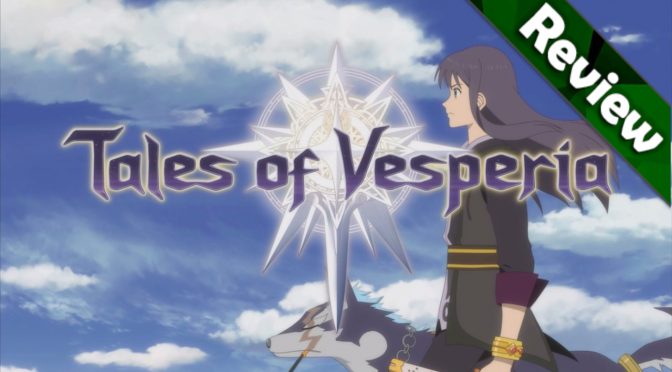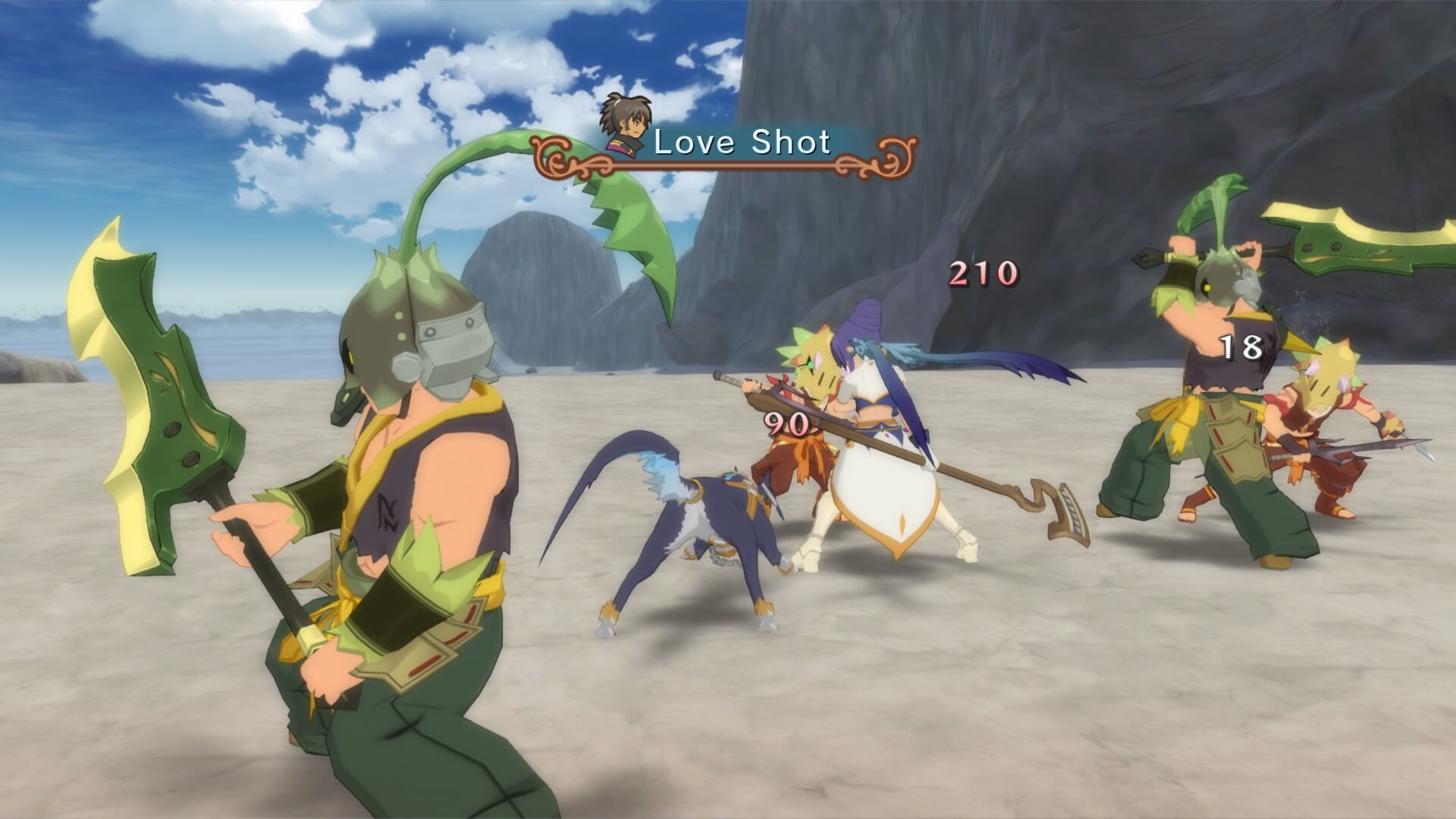The Tales of, or just Tales, series has always occupied something of a strange blind spot in the résumés of even the most hardened JRPG fans in the West, and I am no exception. Indeed, these games have faithfully preserved so many of the most recognisable motifs of this genre through release after release. Yet, somehow, they have slipped under my radar time and time again.
When the definitive edition for Tales of Vesperia was announced, it felt like fate reaching out its hand to me. While the game initially launched during the glory days of the Xbox 360 and the PS3, Namco Bandai has now made their 2008 classic fully compatible with current-gen platforms. They also sweetened the deal by adding extra goodies that were originally exclusive to the Japanese release. Naturally I could no longer ignore the signs that my moment had finally come to dive into this well-beloved series.

After spending what felt like a 59-hour holiday in the mystical world of Terca Lumireis, the adventures I had with Yuri and his band of misfits have left me with mostly fond memories. There were certainly more than a few opportunities where I couldn’t help but sigh with frustration. However, a potent combination of confident storytelling, some unique mechanics and characters that I could actually care about, made me question why it took so long for me to try out a Tales game.
Heads and Tales
Tales of Vesperia truly represents a master class in how to retain the player’s focus on the main story line. Much like Dragon Quest XI, which I reviewed a couple of months ago, it is the plot in Tales of Vesperia which acts as the key driving force behind the gameplay since everything the player does seems to feed really naturally into the overall adventure. Completing every objective always felt like I was adding more pieces to the puzzle of a bigger picture rather than the inconsequential padding often seen in this genre.

Given that this game could easily take around fifty hours or so to complete, the story is understandably something of a slow burner, which could potentially be a hard sell to some players. Rest assured though, it has been written rather well, and several exciting twists in the way it unfolds will undoubtedly feel more than rewarding to players willing to stick with the game’s more placid narrative pacing.
The actual plot is centered on Yuri Lowell – a dishonoured knight from the imperial legion in the capital of Zaphias. While lounging in his bedroom window (like only an anime teenager can), his downtown neighbourhood was unexpectedly flooded with water. Seems some lowlife pinched the ‘aqua blastia,’ which is a magical device needed to regulate and control the water supply to the slums. He wakes his pipe-smoking dog, Repede, and the duo set off to where the culprit might be hiding.
Seriously, his dog smokes a pipe, and how this poor pooch somehow succumbed to a tobacco addiction still leaves me sleepless with questions at night. In any case, retrieving a magic stone from a petty thief should be a cakewalk for an ex-knight right? Wrong. What is any JRPG without some unwitting hero stumbling into a major calamity?
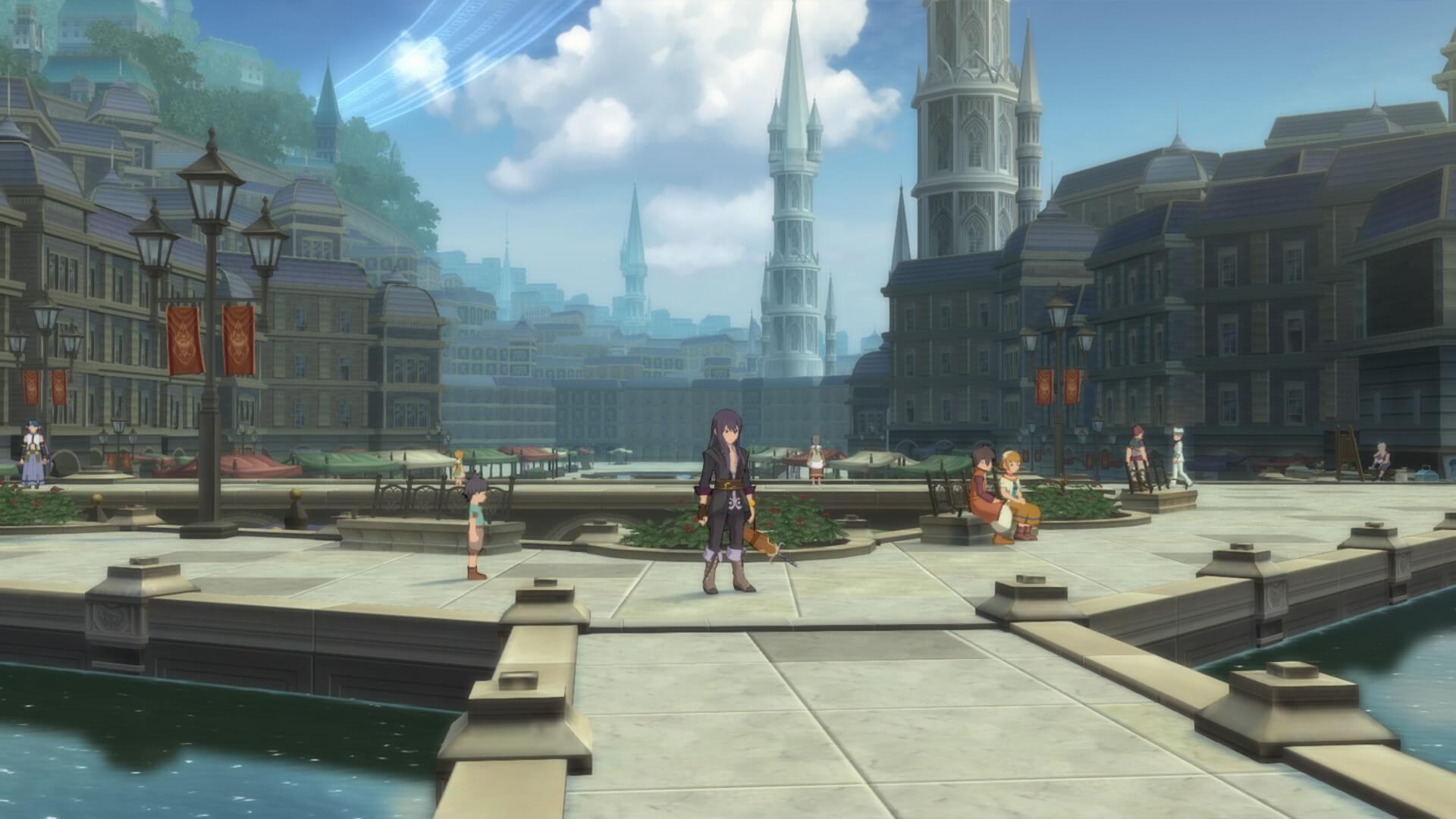
Somewhere during his efforts to capture the thief, Yuri ends up in the slammer. However, never one to be held down, he escapes in no time and runs into a noblewoman, named Estelle, who shares his passion for running from the authorities. She urgently needs to find a mutual friend of Yuri’s named Flynn, who just so happens to be located in the same direction as the thief’s getaway. The duo, along with Repede, therefore decide to make an impromptu little road trip together into the wilderness beyond the city.
From here, the little fellowship travels from one location to the next only to find themselves constantly one step behind both Flynn and the blastia thief. It’s not all bad since every stop reveals more to Yuri and Estelle about a deeply entrenched conspiracy surrounding both the stolen blastia, the iron fist of the Zaphias Empire, and the guilds operating outside of the law. Needless to say, they soon find themselves unavoidably drawn into a much bigger mission in which the very fate of Terca Lumireis might be at stake.
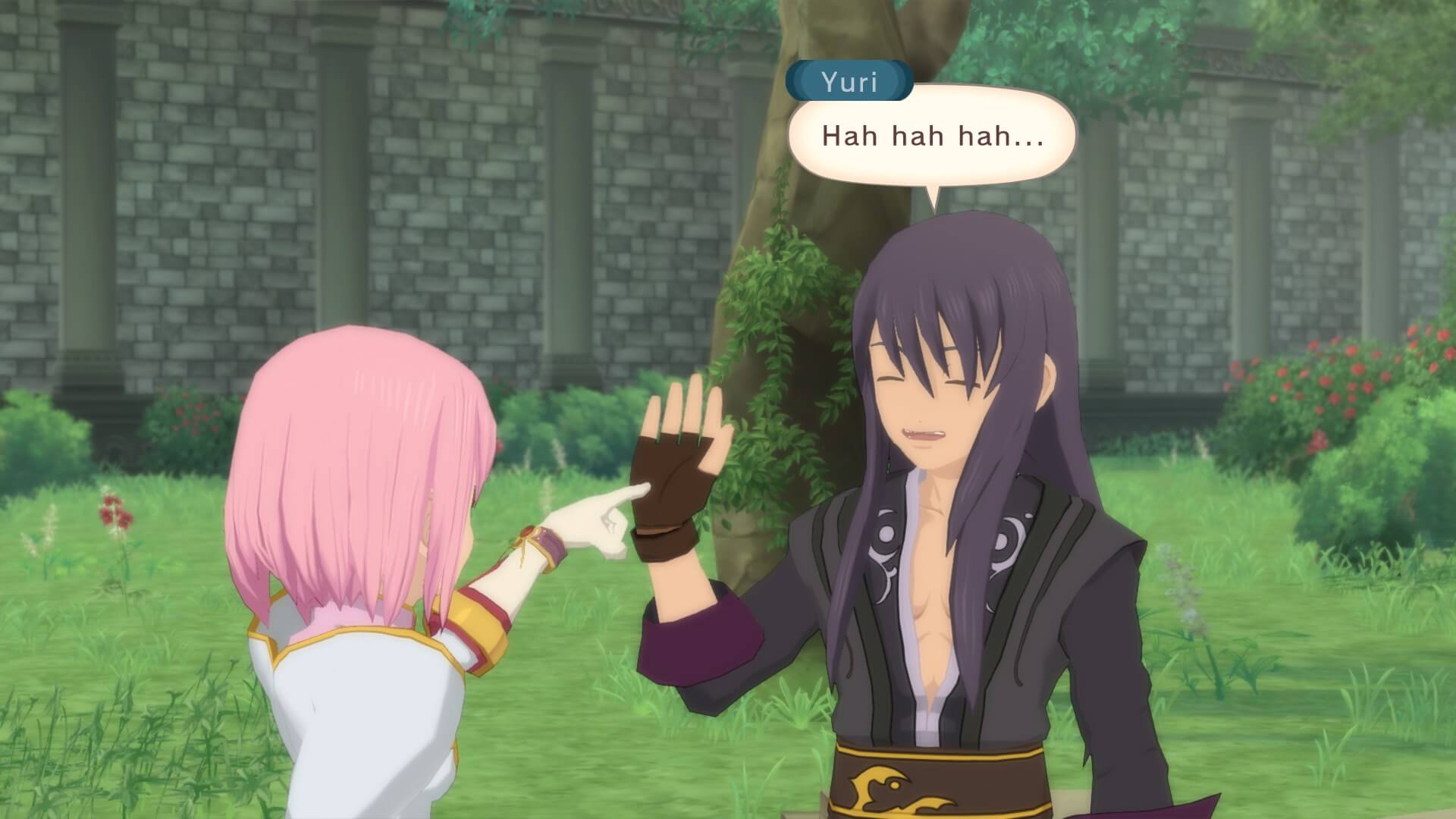
As per usual, the friends that help them throughout their travels ultimately end up joining their little clique until the group is big enough to form their own guild. They decide to name their guild ‘Brave Vesperia,’ and first to join is Karol, a young boy exiled from another guild and thus eager to prove himself as a fighter. A feisty blastia scientist, Rita, joins the group shortly after since she sees their journey as an opportunity to learn more about the mythical devices.
Flynn also joins once the gang finally catches up to him, along with three other characters named Raven, Judith and Patty. I cannot disclose much about the these characters without giving away some crucial story moments, but it is worth noting that the writers did a superb job of keeping me uncertain with regards to their true identities and intentions. It certainly set the stage for some rather interesting surprises later on.
The devil is in de-tales
If I had to summarize Tales of Vesperia: Definitive Edition, I would say that it plays like entering your own anime epic. Many aspects of the game, from its narrative mechanisms to its combat style, impart a distinct cinematic and theatrical feeling to the player. As such, the game is generally a mix of pretty standard JRPG content, but with a noticeable visual edge which has always given this series its unique identity within the genre.
The most obvious implementation of its anime pedigree lies in the game’s visuals. Tales of Vesperia has been rendered in a colour-popping, cel-shaded style which, even ten years later, looks great. A few shockingly bad in-game cut scenes have unfortunately survived the transition to the current generation, but they are few and far between thankfully. Besides, they were instantly forgotten once you see how well the game’s graphics complement the fully animated cut scenes (also equally gorgeous).
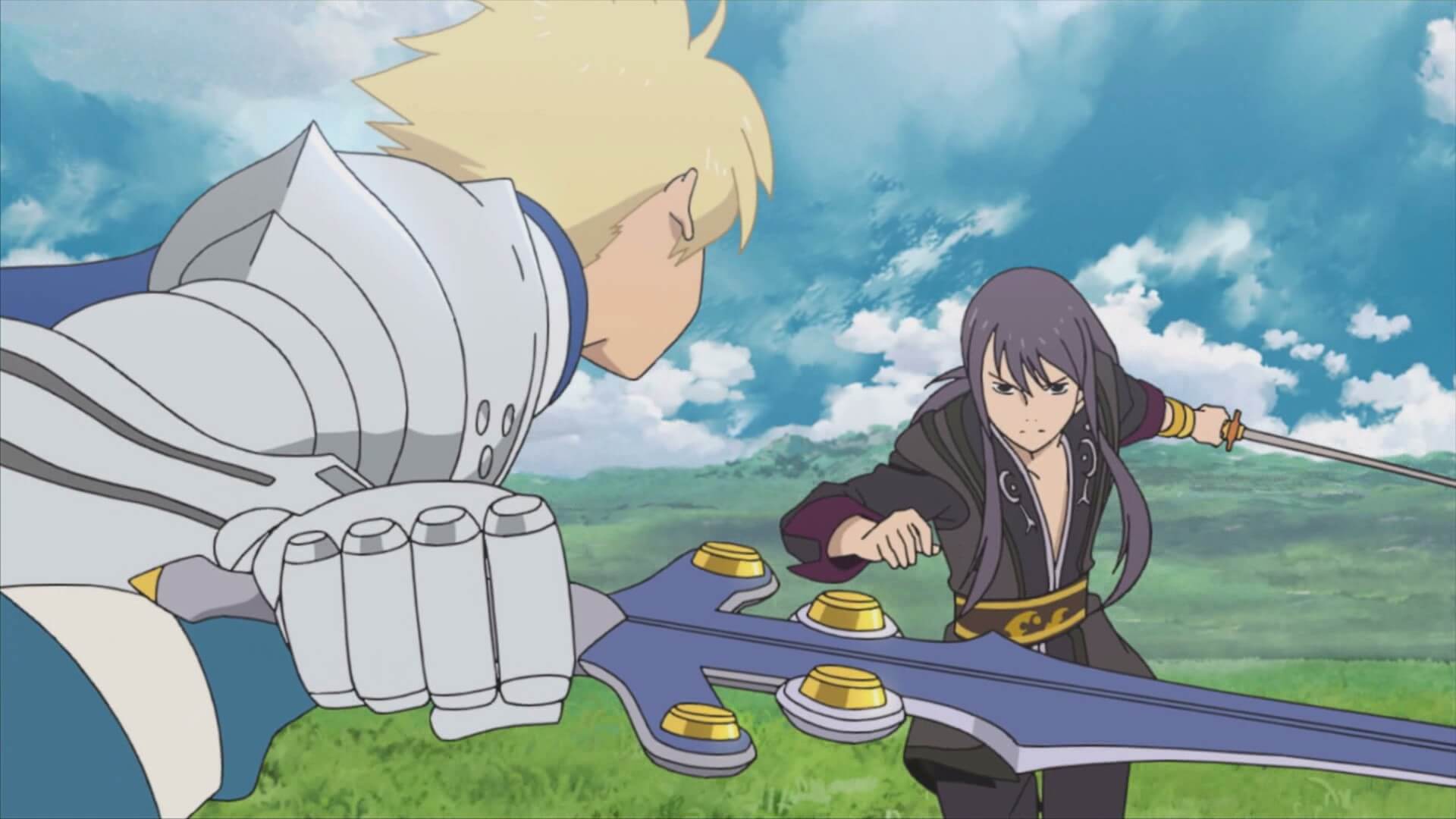
The visuals are accompanied by an arousing and diverse soundtrack that is always in sync with what’s on screen. Combat scenarios generally received thumping rock beats, while exploration was augmented by soothing, classic, orchestral symphonies, but the cherry on top is the opening song. It is called ‘Ring a Bell’ by Bonnie Pink and trust me, it will be firmly stuck in your head by the time the game is done. Go give it a listen.
True Commitment to Story-telling
As I mentioned, Tales of Vesperia shows its commitment to being a cinematic-driven adventure in how the game takes a more linear narrative approach. It didn’t matter if it involved infiltrating a mansion of a corrupt official, or helping a town repair the blastia that upholds a protective barrier against monsters. Every objective felt more like an episode in how the story plays itself out.
This effectively means that the game offers very little side content beyond of the missions related to the main story, and I can imagine fans of fuller and more ‘collectable-centric’ JRPG’s might be left wanting here. For me, on the other hand, it was refreshing to play through a role-playing game that placed its story so front and center. Besides, if you ever get tired of blastia and the cast prattling on, there are recipes to create, battle strategies to refine, and ample opportunities to fight monsters for some extra XP on the side.
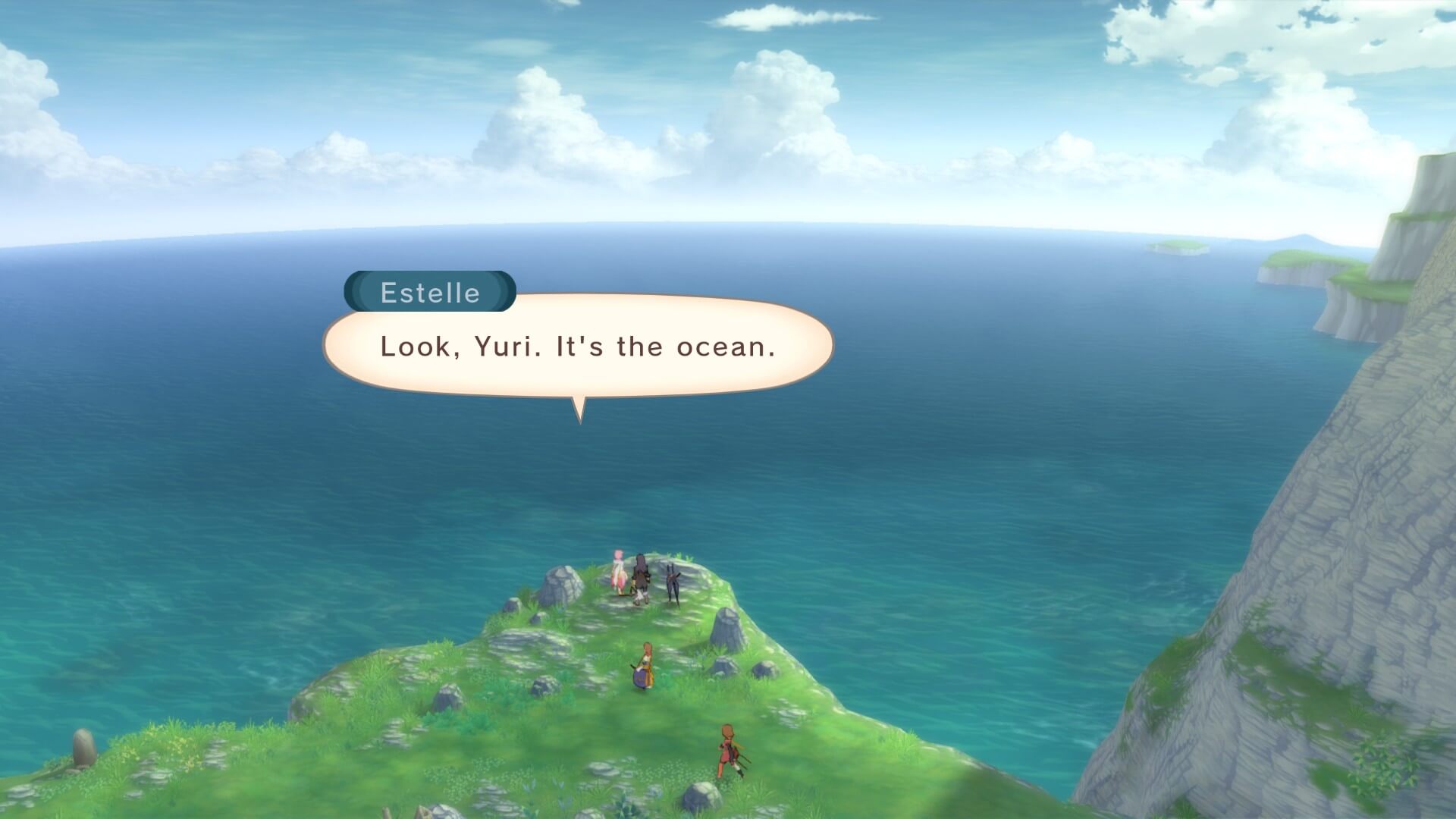
Speaking of prattling on, Tales of Vesperia has got one of the chattiest casts I have ever encountered in a game. It is not exactly a problem (unless this kind of thing irks you) since the dialogue and interactions between characters have been written well and have been superbly localised. The lengthy conversations between the gang is in fact one of the most crucial ways in which the game conveys their personalities to the player, as well as colouring in the lore and history of Terca Lumireis.
The interactions between Karol and Rita were particularly a highlight of the game since they elicited quite a few chuckles from me. Karol constantly pipes up with something stupid to say when the adults are talking only to be silenced by Rita with a firm head jab. It represents the kind of slapstick comedy I used to love while I was watching the Bleach anime series.
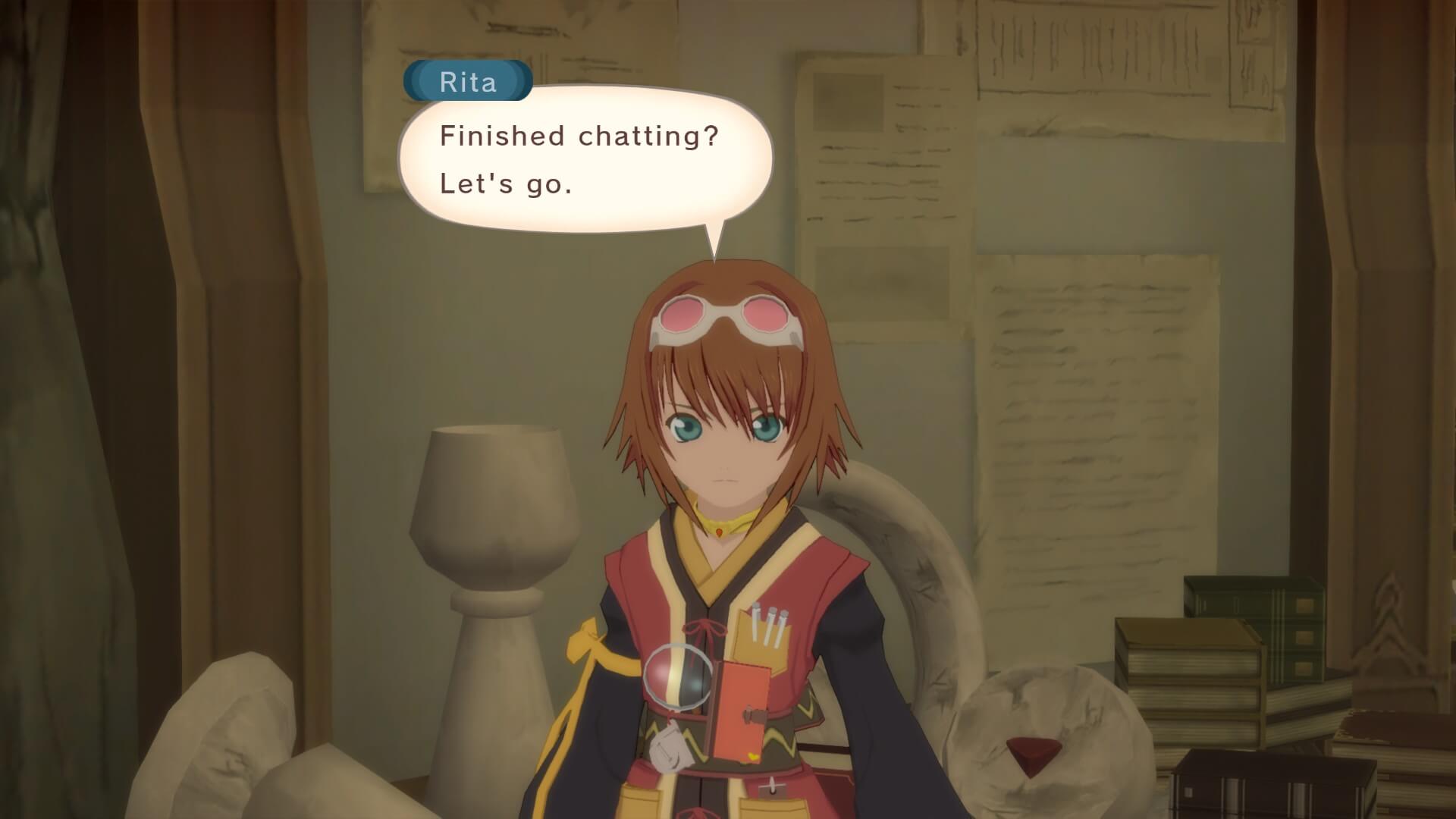
Of course, additional, but entirely optional, interactions between characters are presented to players via the ‘skits’ that have become a fan favourite in this series. These are essentially just delightful little intermissions in which the different characters have a brief tête-à-tête with one another.

The skits could involve one character sharing their knowledge on a certain area, or just throwing some good old-fashioned shade at one of the others. They serve only to endear the characters to the player and are totally skippable, however I laughed my way through nearly all of them since they exhibit the same quality of writing as the rest of the game. It is yet another area where Tales of Vesperia demonstrates the series’ dedication to making its cast memorable and relatable.
The Linear Motion Battle System
The combat is where things get a little different, and, as any Tales veteran will be happy to tell you, it is here where the franchise makes its sharpest departure from the rest of the genre. Whereas all the more familiar names from the JRPG founding fathers opted for the classic turn-based battles, Tales games have since their SNES days had a more active system that resembles a permutation from a hack ‘n slash game.
In the case of Tales of Vesperia, it means the player must attack, guard and use magic against the enemy in real time, usually with the help of three squad mates. The battles are not random, and like many modern games of this kind, players can circumvent (read: run away from!) enemies that they would prefer not to engage.
A typical scenario would involve you seeing an enemy either in close quarters, or in the over world map. Once the enemy has been engaged in combat, the game then moves everyone into an arena of sorts, with the camera adopting a side-long perspective not unlike a fighting game. The player then locks onto a single, chosen enemy, and proceeds to pummel them with a mixture of light melee attacks, combined with more powerful, magic-fueled assaults called ‘artes.’

There are even rudimentary combos to be chained together from your character’s light and heavy attacks, and the higher Yuri (and the others) level(s) up, the more artes and finishing moves become available. Several short cuts have also been bound to the D-pad, which allowed me to change the overall strategy of my party on the fly, and you can really get into the nitty-gritty of tailoring your own unique fighting strategy. By the time the game places you toe-to-toe with the boss enemies, changing between different tactics is utterly indispensable.
For example, Rita is primarily a mage class with magical attacks while Estelle is a powerful healer. During normal grinding and lesser enemy encounters, they can certainly hold their own right next to you with sword and shield. However, during boss fights I tailored a preset where both characters kept their distance while focusing on the party’s health once their own HP dropped below 75%. Once I got the hang of all the systems and subsystems at work in the combat mechanics, the action-packed fighting became a delightfully intellectual affair much like a menu or turn-based system.
Alas, no matter how skilled I became at mowing down the Pokemon-esque monsters, I couldn’t look past how clumsy the system felt at times. If Yuri was not specifically locked onto the enemy closest to him, he often missed with his weapon leaving him striking stupidly at thin air in the middle of the battle arena. Making matters worse is that the controls are not the most responsive either meaning that combos are more a question of button mashing rather than skill.
I also found most boss fights to be somewhat unfairly difficult in comparison with the rest of the game play. This is a matter easily solved by simply switching the combat difficulty to ‘Easy’ in the in-game settings (which I did a lot). Still, it feels like the developers could have done a little more to prepare the player for the jarring contrast in difficulty that so many of the boss encounters represent.
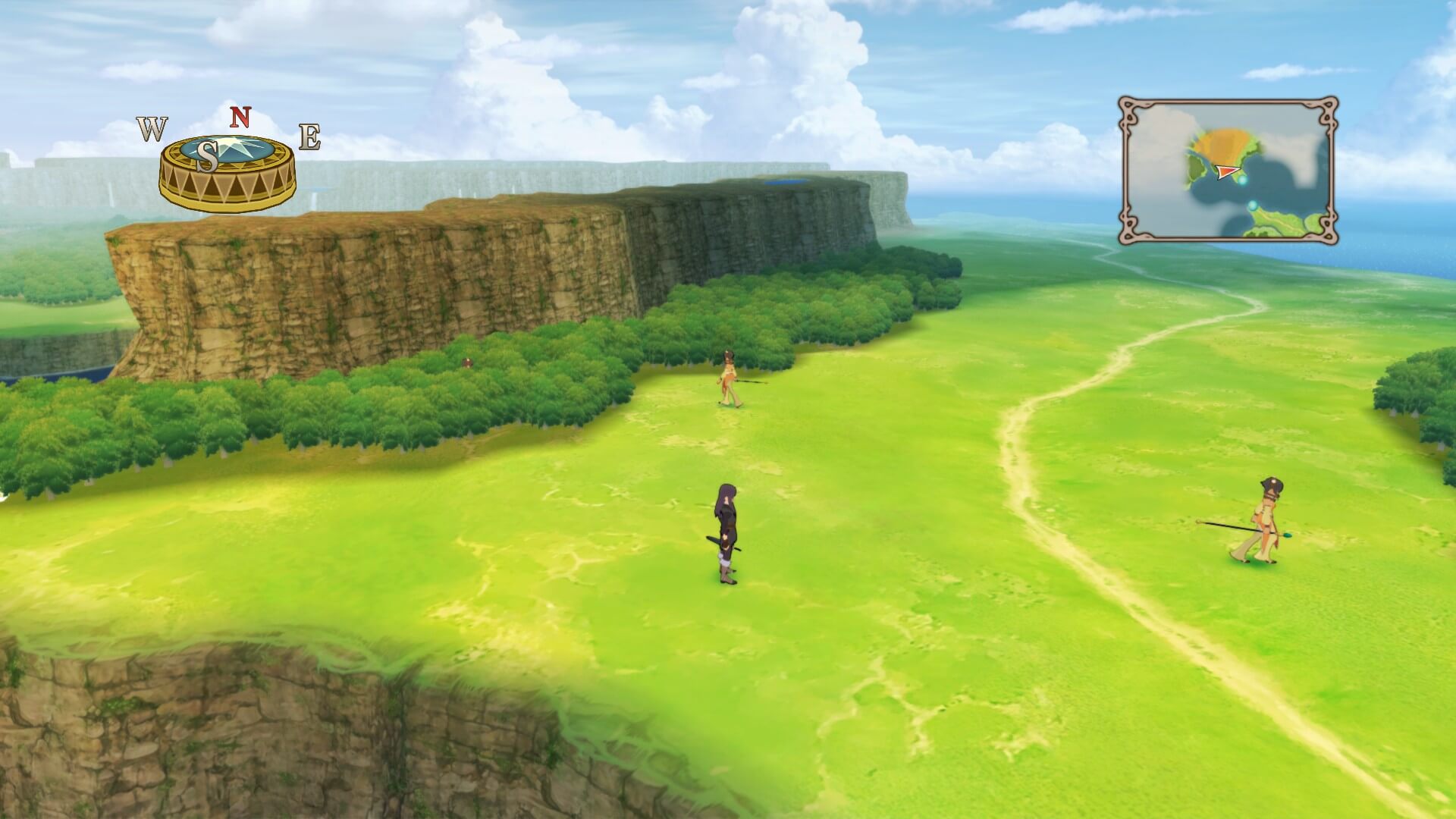
These are not exactly deal-breakers in the grand scheme of the combat system. Yet, it is disappointing to know that with a little tweaking and refinement, the already decent and unique trademark of this series could have elevated a great game to a nearly perfect status.
To be or not to be…
Tales of Vesperia is like the paradox of its genre in that it hosts so many familiar elements which fans would recognize in an instant, yet it clearly shapes its own identity through its stylistic choices. Whereas other JRPG’s feel like the seasoned old business magnates in their crisp suits, this game feels like the new, young billionaire wearing urban fashion.
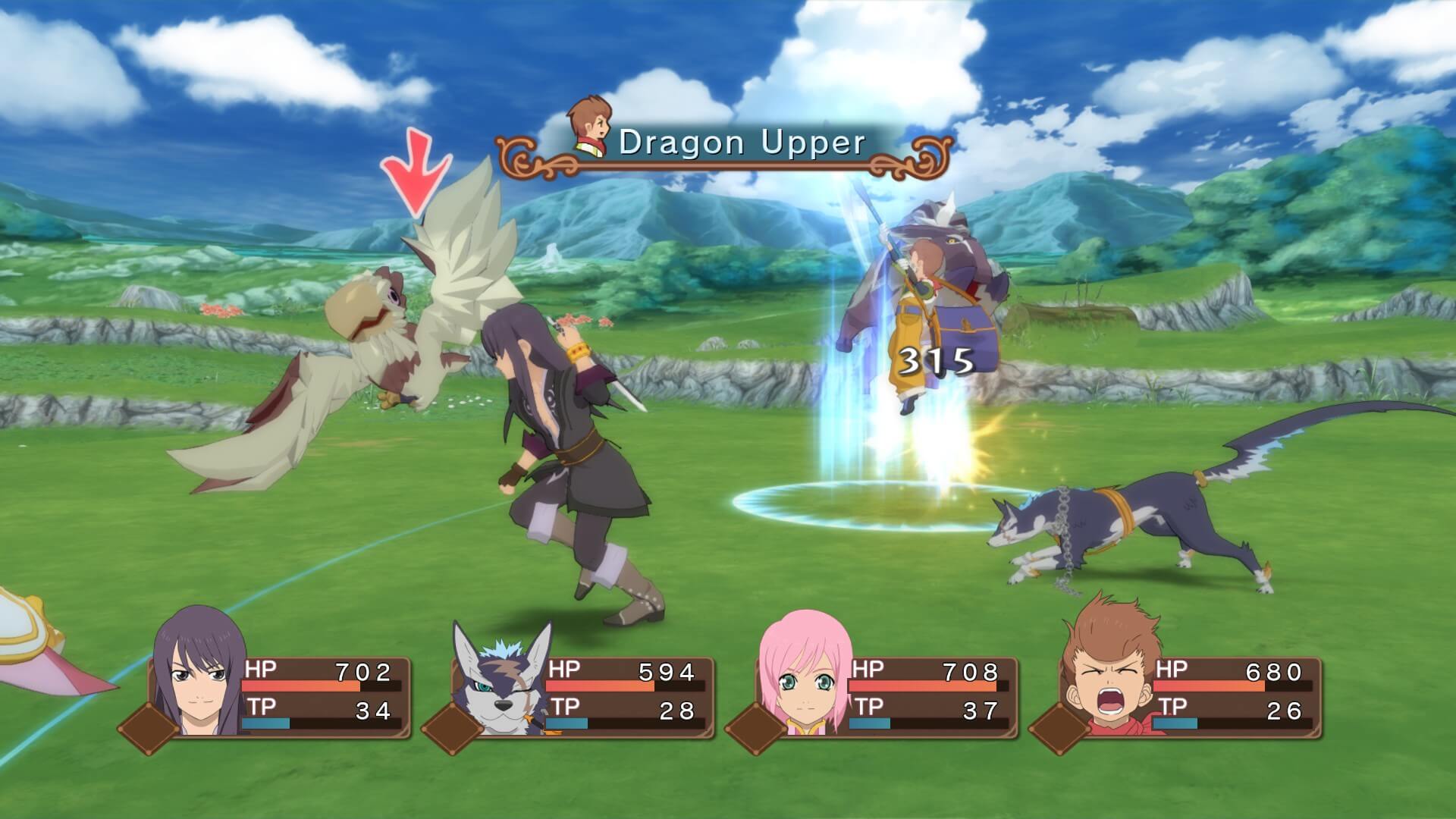
This is not the first JRPG to be so consistently driven by its story, nor is it unique in its presentation. What I feel is special in Tales of Vesperia is how gracefully it pulls all of these elements together. This game will never allow you to become too preoccupied with one particular aspect of the overall experience on offer. Instead, it represents a well-rounded adventure which demands to be consumed in big, greedy chunks at once.
If you have been playing turned-based JRPG’s since the days of using a potty, and you feel no immediate rush to venture too far out of this landscape, Tales of Vesperia might feel a little too strange for comfort. However, if variety is the spice of life, and you are willing to test the barriers of what this genre can do, look no further. This game has no intention to overwhelm you with complexity which makes it a compelling choice for old hands and newcomers alike.
![]()
- Supports up to 4K resolution
- Cel-shaded beauty
- Engaging story
- Relaxing gameplay approach
- Strong characters
- Excellent score
- Brilliant localisation
![]()
- Several cut scene animations
- Combat controls
- No option to quick save
- Difficulty spike with bosses
Playtime: 57 hours total. For the single player campaign
Computer Specs: Windows 10 64-bit computer using Nvidia GTX 1070, i5 4690K CPU, 16GB RAM – Played using an Xbox One Controller
Pieter hails all the way from the tip of southern Africa and suffers from serious PC technophilia. Therapists say it is incurable. Now he has to remind himself constantly that gaming doesn’t count as a religion even if DRM is the devil. Thankfully, writing reviews sometimes helps with the worst symptoms.

